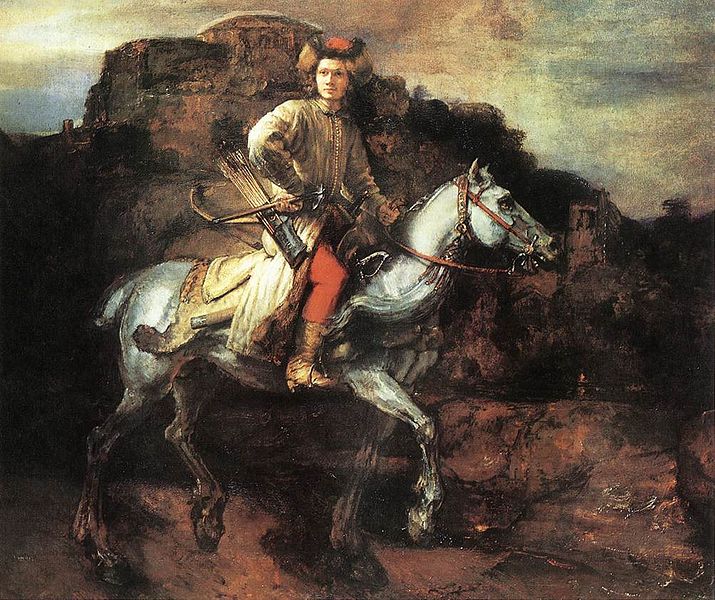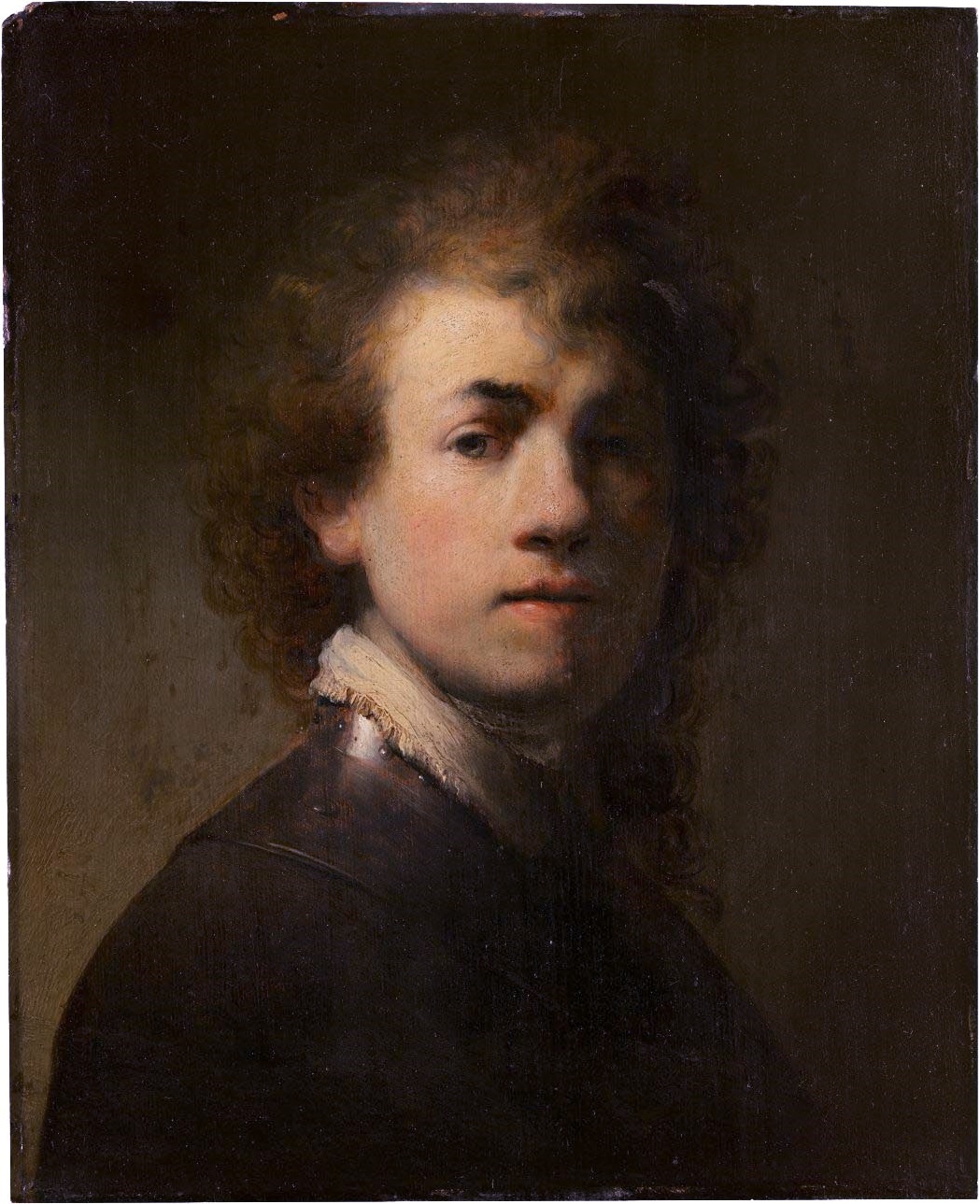When Henry Frick bought the painting in 1910 the consensus was that the work was by Rembrandt. In 1984 this attribution was contested, though it remains a minority view. The quality of the painting at times was regarded as a reason to debate the authenticity of the work. The riders face, jacket, and the horse's harness are all in meticulous detail, but parts of the background; the landscape and the hindquarters of the horse, are sketchier, and this has led some to conclude that it was unfinished and quickly completed by Rembrandt or another artist. Theories regarding the artist's intention of the painting exist as well. Questions as to it whether it was intended as a portrait of a particular person, or not, have created some debates. The inscrutable character has encouraged various theories about who is represented, and many have been suggested. The candidates have included an ancestor of the 18th-century owners of the painting, the Polish Oginski family along with some historical figures. Other candidates include the Old Testament’s David, The Prodigal Son, the Mongolian warrior Tamerlane, the Dutch medieval hero Gijsbrecht IV of Amstel, and a Soldier of Christ; the mounted soldiers who defended Eastern Europe against the Turks. In the end, some have suggested he is simply a foreign soldier.




The Polish Rider
oil on canvas • 116.8 x 134.9 cm
 Rembrandt van Rijn
Rembrandt van Rijn